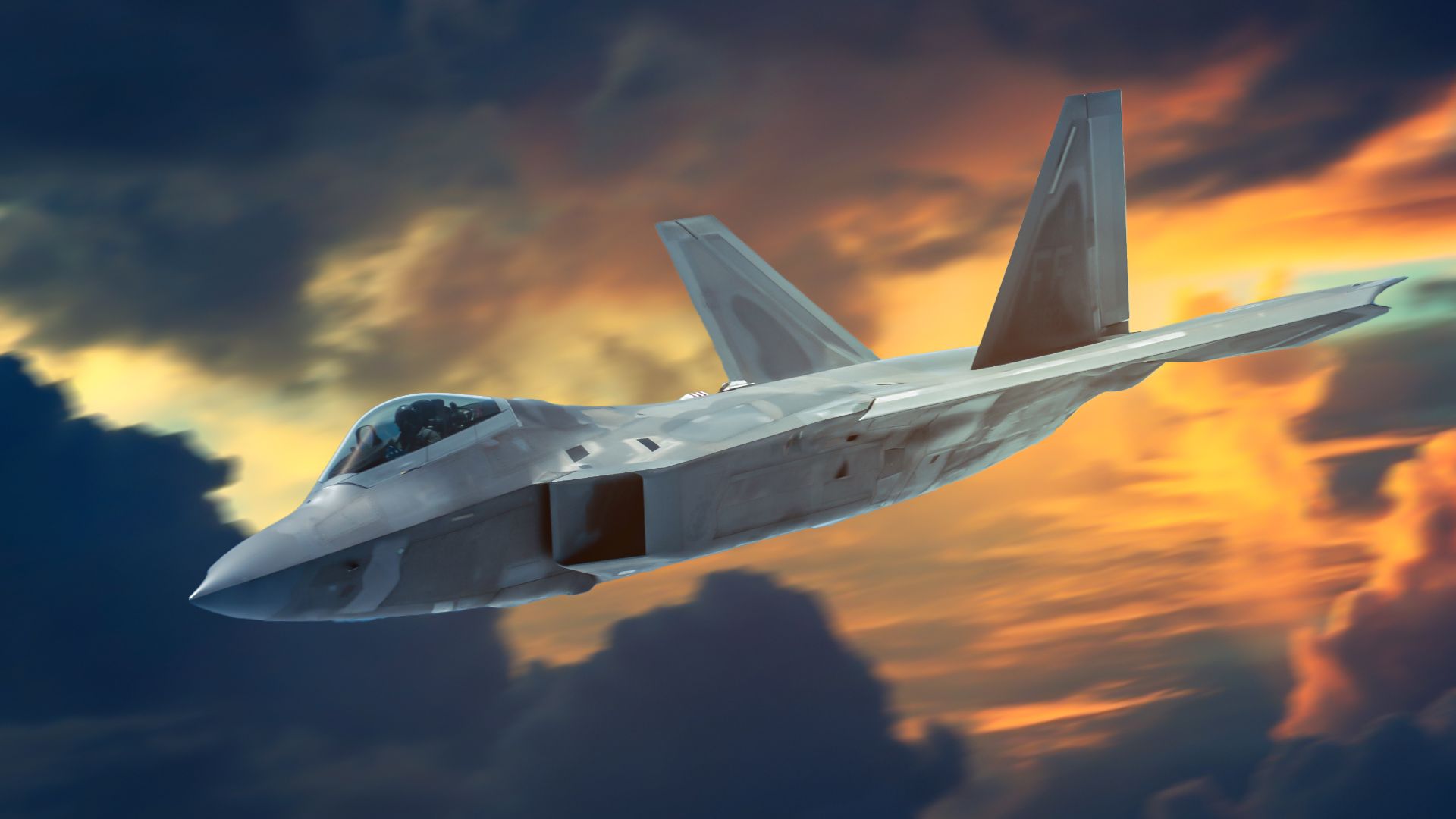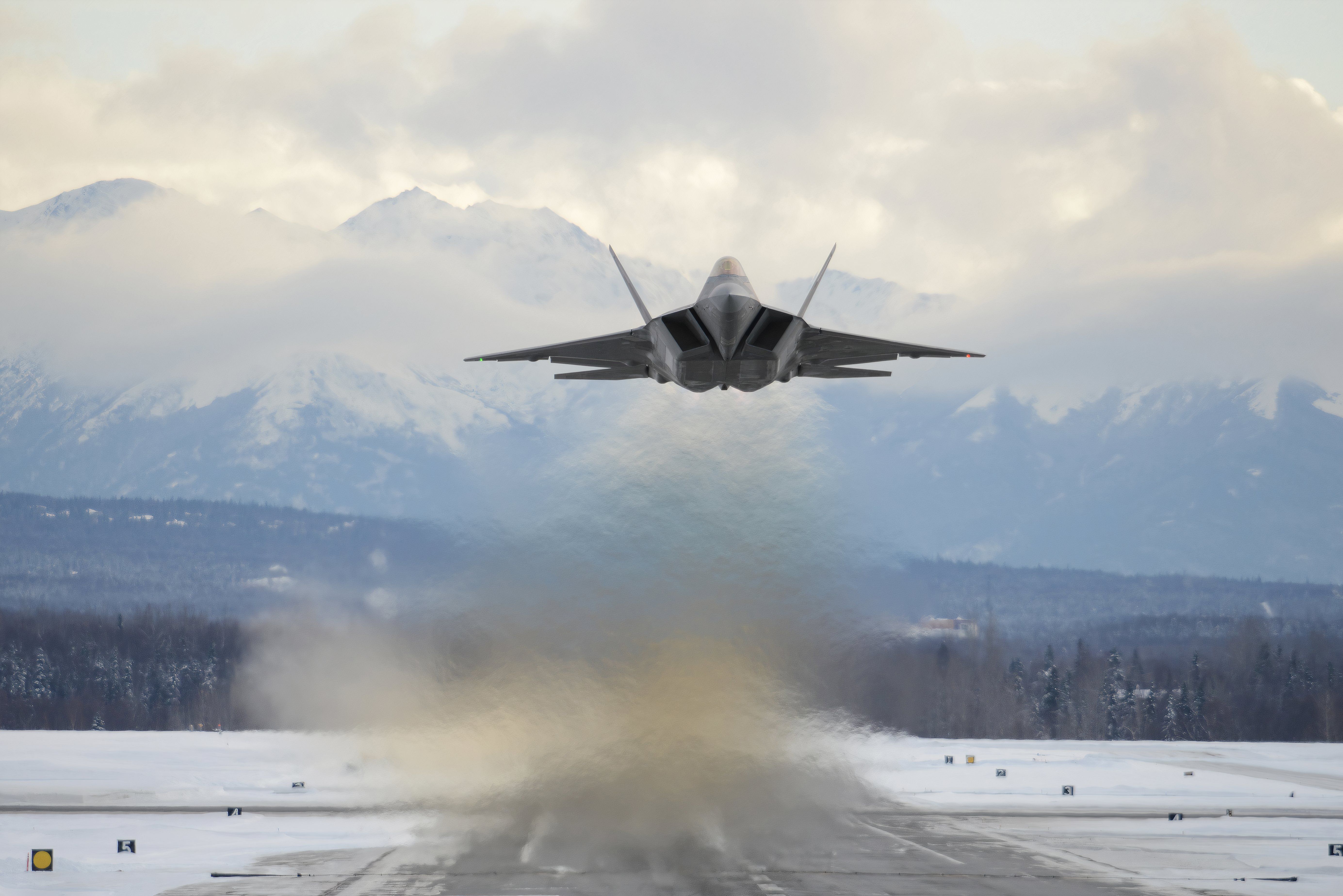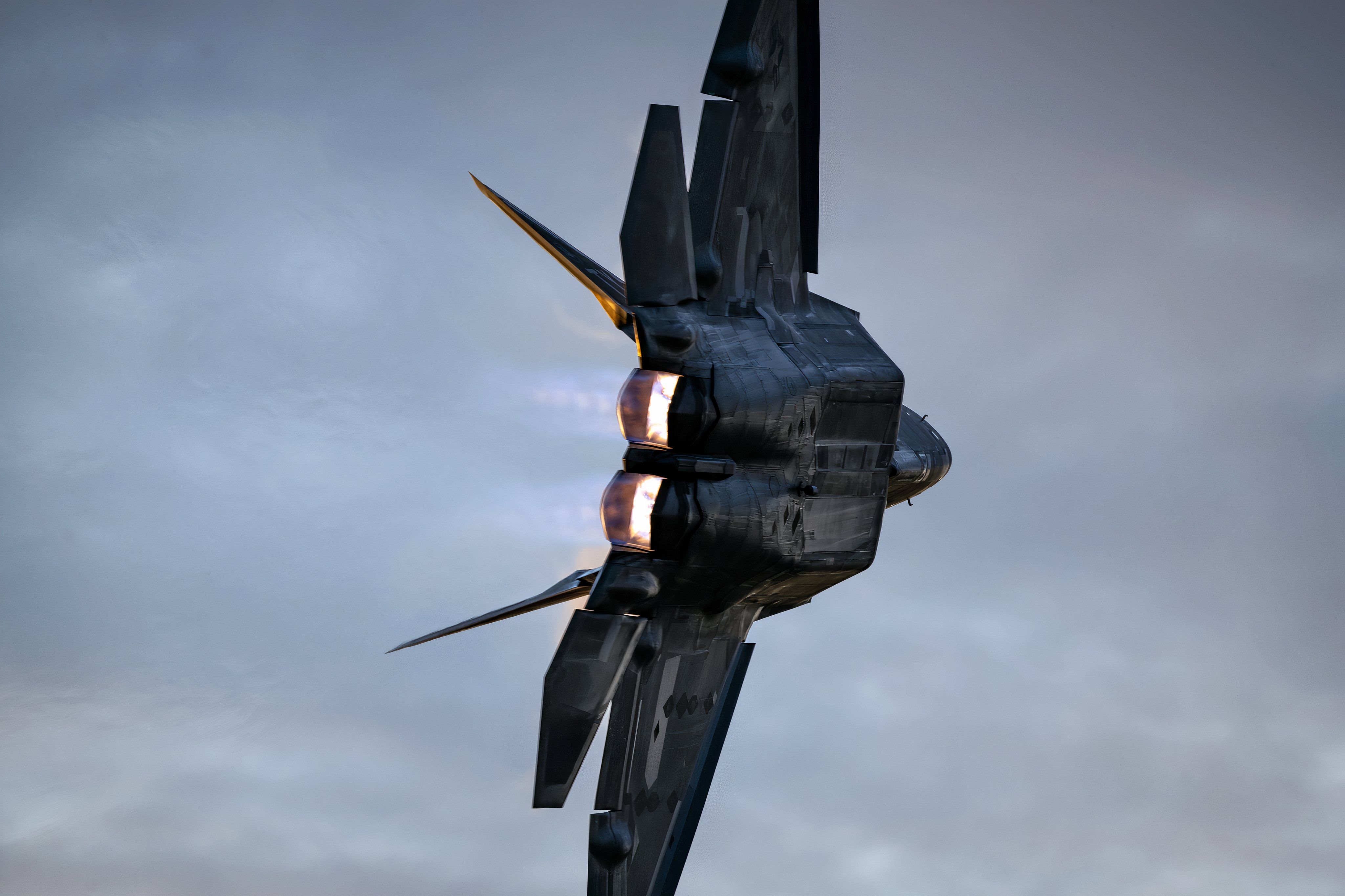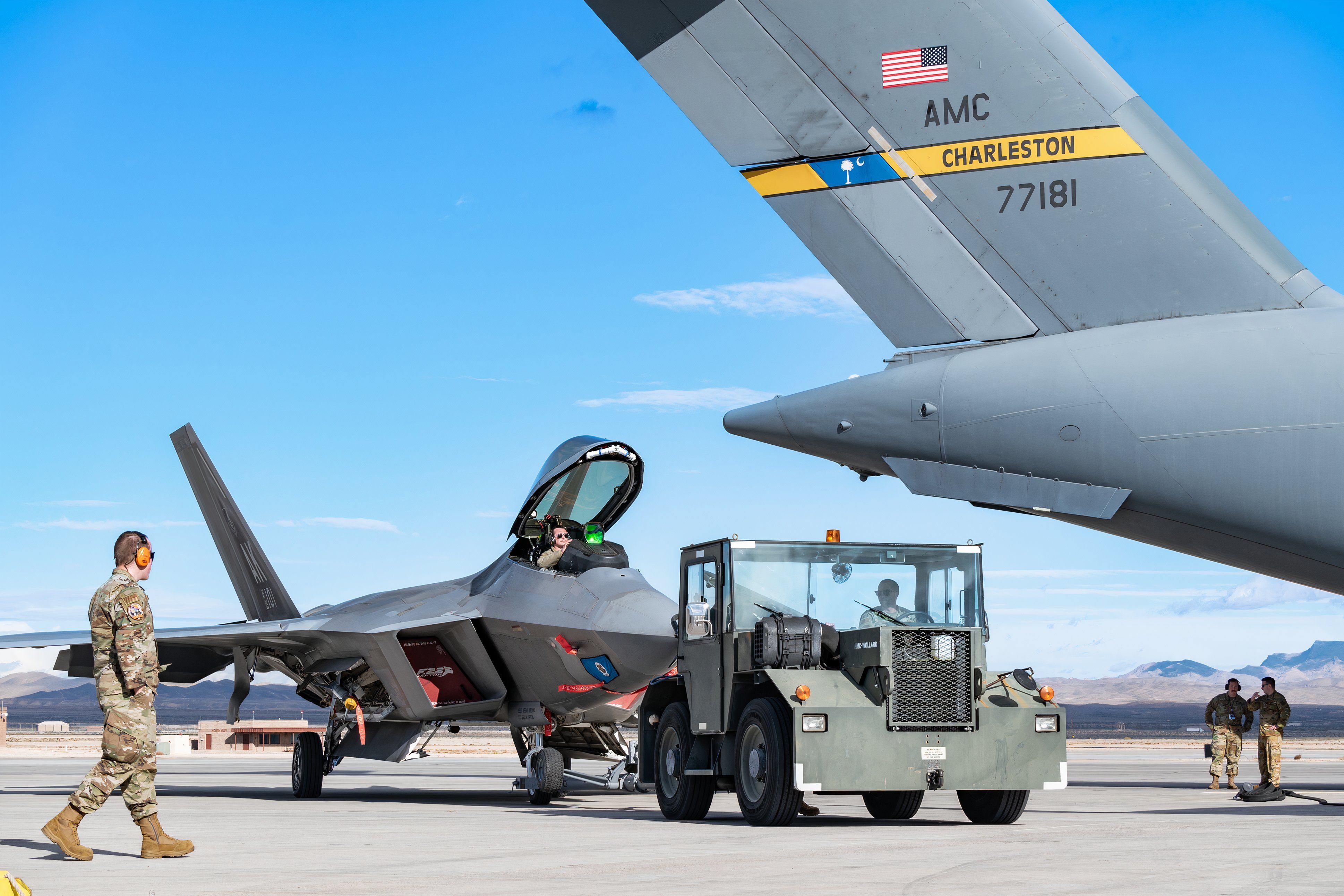Summary
- The F-22 is potent but has limitations, like a restricted range due to the Cold War design.
- The USAF aims to replace the F-22 with a more advanced NGAD fighter sooner than planned.
- The F-22 is unmatched in stealth, speed, and avionics, but the limited range poses challenges.
The short answer to whether the Lockheed Martin F-22 Raptor is invincible is yes if you compare it to other operational fighter aircraft in service today. Despite this, the United States Air Force (USAF) would like to retire the F-22 early and replace it with a sixth-generation jet fighter.
While the Lockheed Martin F-22 Raptor may be the most potent and sophisticated fighter in the world, it also has weaknesses. Introduced nearly three decades ago, the United States Air Force (USAF) is acutely aware of the F-22 Raptors limitations and, while first wanting to retire the plane in 2030, is now spending billions of dollars to keep it operational until something better comes along.
Photo: USAF
If you look at the Lockheed Martin F-16 or the McDonnell Douglas F-15 Eagle, both planes are still in use for some 40 years after having first entered service. In 1981, the USAF sought an advanced air superiority fighter to replace the F-15 and F-16 that could counter advanced Soviet aircraft.The worry in the 1980s was that the Soviet Union was working on advanced fighter jets and more sophisticated ground-to-air anti-aircraft missile systems before launching an invasion of Central Europe.
The development of the Lockheed Martin F-22 Raptor
In September 1985, the USAF issued a request for proposals (RFP) for a new fighter jet that was highly maneuverable and hard to detect by enemy radar. Because of the cost involved in developing a clean sheet jet Lockheed Martin teamed up with General Dynamics and Boeing while
Northrop Grumman partnered with McDonnell Douglas. The planemakers then enlisted Pratt & Whitney and General Electric to develop a propulsion system for the new planes.
Photo: USAF
Each team built two prototype aircraft, with the Northrop/McDonnell Douglas YF-23 making its maiden flight on August 27, 1990. Just over a month later, the Lockheed/Boeing/General Dynamics YF-22 made its maiden flight in Palmdale, California, on September 29, 1990. After undergoing trials at Edwards Air Force Base in Kern County, California, on April 23, 1991, Secretary of the USAF Donald Rice announced that the Lockheed team was the winner and that Pratt & Whitney was selected to build the engines.
Only a single-seat F-22 was built to reduce costs
Initially, the US Department of Defense contract was for two variants of the plane, the single-seat F-22A and a two-seat F-22B. The requirement for a two-seat aircraft was canceled in 1996, with all orders converted to the single-seat variant to reduce development costs.
The first production Lockheed Martin F-22 Raptor was revealed on April 9, 1997, at Dobbins Air Reserve Base in Marietta, Georgia, making its maiden flight on September 7, 1997. Designing and making an aircraft that could counter the Soviet Sukhoi Su-27 and Mikoyan MiG-29 fighters was now less important after the threat of the Soviet Union invading Central Europe had diminished following the collapse of the Soviet Union on December 25, 1991.
Now, not as urgent as before, the Department of Defense began looking at cost-cutting and was unhappy with how expensive the F-22 program had become. Initially, the USAF expected to receive 750 F-22s, but this number was cut to 339 aircraft over the years. Despite hoping to get 339 F-22s, in the early 2000s, the United States was busy fighting in Afghanistan and Iraq, which further reduced F-22 numbers to 183 aircraft. During its production run between 1996 and 2011, a total of 187 F-22s were built.
The Lockheed Martin F-22 Raptor enters service with the USAF
The first Lockheed Martin F-22 Raptors were delivered to Tyndall Air Force Base near Panama City in Florida for pilot training in September 2003. The 1st Fighter Wing, comprising Lockheed Martin F-22 Raptor aircraft, arrived at Langley Air Force Base near Newport News, Virginia, in January 2005.
After participating in several exercises, the Lockheed Martin F-22 Raptor performed its first home defense mission in January 2007. Based at Elmendorf Air Force Base near Anchorage, Alaska, F-22s of the 90th Fighter Squadron were used to intercept and escort two Russian Tupolev Tu-95MS bombers.
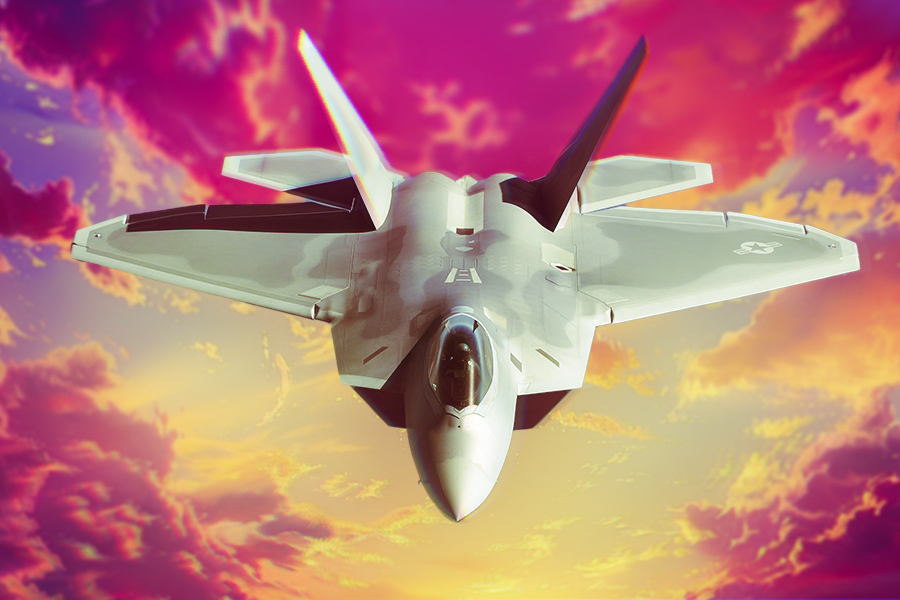
Related
Explained: The Strengths & Weaknesses Of The F-22 Raptor Fighter Jet
The Raptor’s incredible power and stealth make it the most dominant fighter on the planet, but its cost and obsolescing technology hold it back.
The Lockheed Martin F-22 Raptor was used in combat for the first time on September 22, 2014, when it participated in the American-led intervention in Syria, dropping 1,000-pound bombs on Islamic State targets near Tishrin Dam. Throughout its deployment in the Middle East, the F-22 performed close support duties that deterred Syrian, Iranian, and Russian aircraft from attacking Kurdish forces backed by the United States. Despite being used against Islamic State, the aircraft’s primary role in the region was to conduct surveillance and gather intelligence.
Photo: USAF
The Lockheed Martin F-22 Raptor gives the USAF a combination of stealth, supercruise, maneuverability, and integrated avionics that is unmatched by any aircraft of another nation. Highly maneuverable and extremely fast, the F-22 and its sophisticated sensor suite allow USAF pilots to identify and destroy enemy threats without being detected. When configured for aerial warfare, the F-22 has six AIM-120 AMRAAMs and two AIM-9 Sidewinder missiles.
What is the Lockheed Martin F-22 Raptor’s Achilles heel?
While the F-22 may be the world’s most advanced fighter jet with its futuristic looks and blistering speed, it remains a Cold War-inspired aircraft designed to fight the Soviet Union. When Lockheed designed the plane, it was built to be deployed from airfields in Europe, and because of its fuel-hungry engines, it only has a maximum range of 600 miles without being refueled.
These days, the United States military focus is on China and the possibility of it invading Taiwan. The problem with the F-22 is that 600 miles does not take you very far when crossing hundreds of miles of the Pacific Ocean. If an invasion of Taiwan should occur, the closest American Air Base is Kadena Air Base on Okinawa, 450 miles away. If the Chinese took out that base, the next closest base would be 1,400 miles away in Misawa on Japan’s main island of Honshu.
Photo: USAF
Looking towards the future, the USAF would like to retire the F-22 earlier than envisioned to help speed up the development of the Next Generation Air Dominance (NGAD) fighter. The sixth-generation secretive aircraft planned to succeed the Lockheed Martin F-22 Raptor, an aircraft with better stealth and twice the range of the F-22 explicitly designed for a war with China. While the prototype aircraft first flew in 2020, there has been no talk of when the plane will be ready to enter service or how much the aircraft will cost.
What makes the Lockheed Martin F-22 Raptor unbeatable?
- The F-22 can cruise at supersonic speeds without using afterburners.
- The F-22s Pratt & Whitney engines produce more thrust than any other current jet fighter.
- Because of its thrust-to-weight ratio and thrust vectoring, the F-22 is highly maneuverable, making it nearly impossible to shoot down in a dogfight.
- The fifth-generation F-22 is virtually invisible to radar systems.
- The F-22 has advanced communication and sensor systems that allow it to share real-time data with other aircraft.
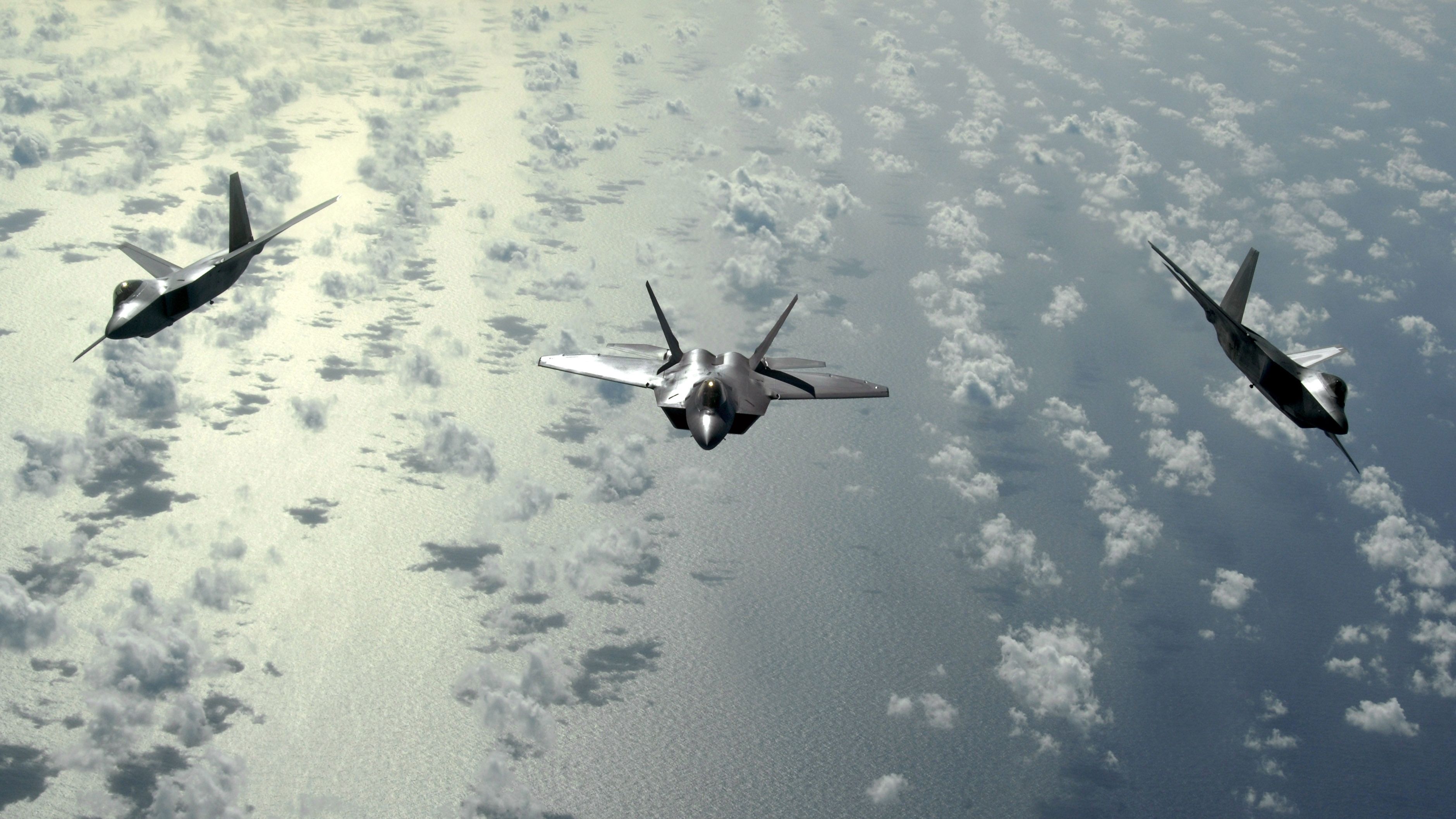
Related
The USAF’s Next Generation Air Dominance Initiative: Everything You Need To Know
The USAF’s NGAD development and outlook is still hazy.

